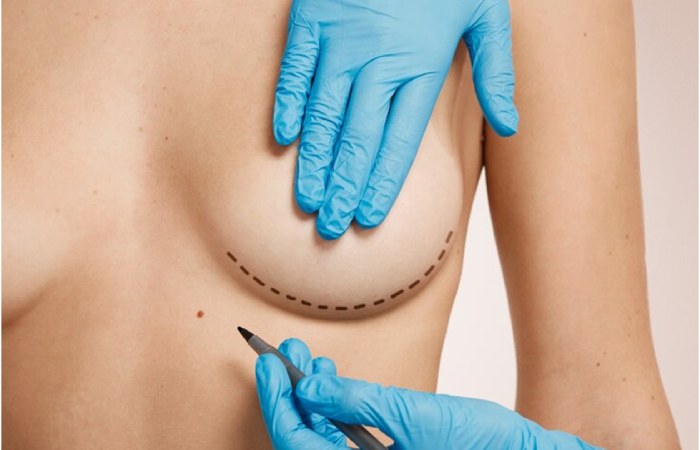Breast cancer is a life-altering diagnosis, but advances in medical treatments have given hope and solutions to those affected. One such option for many is breast reconstruction, a surgical procedure that helps restore the breast’s appearance after mastectomy or lumpectomy. While this is an individual choice, understanding the various options and the recovery process can help women make informed decisions during a challenging time.

What Is Breast Reconstruction?
Breast reconstruction is a surgery to rebuild the shape and look of the breast after cancer treatment. It can be done either at the same time as a mastectomy (immediate reconstruction) or at a later stage (delayed reconstruction). While some women choose not to undergo reconstruction, others find that it can help with emotional and physical healing.
This surgery doesn’t restore normal breast sensation, but it can offer a more natural shape, helping some women feel more comfortable in their bodies post-cancer treatment.
Types of Breast Reconstruction
There are two primary types of breast reconstruction: implant-based reconstruction and autologous, or flap-based, reconstruction. Each method comes with its benefits and considerations, depending on the patient’s health, preferences, and treatment plan.
1. Implant-Based Reconstruction
Implant-based reconstruction involves placing a silicone or saline implant beneath the skin or muscle of the chest. This option is often less invasive than other types of reconstruction, and the recovery period is usually shorter. Here’s what you should know:
- Procedure: Surgeons may place a tissue expander to gradually stretch the skin before inserting the final implant or, in some cases, place the implant directly.
- Pros: Implants are generally less complicated and quicker than flap procedures. The surgery is often done in stages, allowing the patient time to heal between phases.
- Cons: Implants do not last a lifetime and may need to be replaced or adjusted in the future. There’s also a risk of complications like infection or capsular contracture (scar tissue forming around the implant).
2. Autologous (Flap-Based) Reconstruction
Flap-based reconstruction uses tissue from other parts of the body, such as the abdomen, thighs, or back, to create a new breast. This method can produce a more natural result in terms of look and feel but is more complex than implant reconstruction.
- Procedure: Tissue is taken from a donor site (like the belly or buttocks) and transferred to the chest to recreate the breast. There are several techniques, including DIEP (Deep Inferior Epigastric Perforator) flap and TRAM (Transverse Rectus Abdominis Muscle) flap, depending on where the tissue is sourced.
- Pros: The results tend to feel more natural compared to implants. Once healed, the reconstructed breast can adjust with body changes, such as weight fluctuations.
- Cons: This surgery is more complex and has a more extended recovery period. Risks may also be associated with the donor site, including scarring, weakness, or infection.
Deciding Between Immediate and Delayed Reconstruction
Women diagnosed with breast cancer face numerous decisions, and the timing of breast reconstruction is one of them. Both immediate and delayed reconstruction have advantages and challenges, and the right option depends on personal preferences, overall health, and cancer treatment plans.
Immediate Reconstruction
Immediate reconstruction is performed at the same time as the mastectomy, meaning the patient wakes up from surgery with a newly reconstructed breast or with tissue expanders in place.
- Pros: There’s a psychological benefit to waking up with a reconstructed breast rather than a flat chest. There is also less scarring since the reconstruction is done at the same time as the mastectomy.
- Cons: If radiation therapy is part of your treatment plan, it can affect the reconstruction process and lead to complications such as delayed healing or changes in the shape of the breast.
Delayed Reconstruction
Delayed reconstruction is done months or even years after the initial cancer surgery. This option may be recommended if the patient requires additional treatments like radiation or chemotherapy, which could interfere with the healing process.
- Pros: The patient has time to recover from cancer treatment and can take their time considering reconstruction options. This approach also minimizes the risk of complications caused by radiation therapy.
- Cons: Delayed reconstruction may require more than one surgery, and some women may find the waiting period emotionally challenging.
The Emotional Impact of Breast Reconstruction
The emotional aspect of breast cancer treatment can’t be overlooked, and breast reconstruction often plays a crucial role in psychological recovery. For some women, it offers a sense of closure, helping them regain confidence and feel more like themselves again.
However, not every woman will feel the same way. Some may find that reconstruction doesn’t fully restore their sense of self, while others may decide against the procedure altogether, embracing their bodies as they are post-mastectomy. Ultimately, the decision is highly personal, and there is no right or wrong choice.
Recovery Process
Recovering from breast reconstruction surgery varies depending on the type of reconstruction performed and the individual’s overall health. However, there are some general guidelines that most patients will follow:
- Hospital Stay: Implant-based reconstruction may require only a short hospital stay, while flap-based reconstruction could require several days of monitoring.
- Healing Time: It can take a few weeks to several months for the swelling and bruising to subside and for the final results to become visible.
- Post-Surgery Care: Patients must follow post-operative care instructions closely, including wound care, avoiding strenuous activities, and attending follow-up appointments.
Potential Complications
As with any surgery, breast reconstruction comes with risks. Some potential complications include:
- Infection: There’s always a risk of infection at the surgical site, which may require antibiotics or additional surgery.
- Scarring: While surgeons aim to minimize scarring, it’s an inevitable part of the process. Over time, scars typically fade, but they won’t disappear completely.
- Tissue Loss: In some cases, the flap tissue used in autologous reconstruction may not survive, which could require further surgery.
Questions to Ask Your Surgeon
Before deciding on breast reconstruction, it’s essential to have a detailed discussion with your surgeon. Here are some key questions you might consider:
- What type of reconstruction do you recommend for me, and why?
- How long will the recovery process take?
- What are the risks and potential complications with each type of reconstruction?
- Will my reconstruction be affected by further cancer treatments, such as radiation?
- What will the final result look like?

Conclusion
Breast reconstruction is a deeply personal decision for those affected by breast cancer. It offers an option to restore the breast’s shape and may provide emotional healing for many women. Whether opting for implant-based or flap-based reconstruction, understanding the possibilities and being fully informed about the process can significantly affect a patient’s recovery journey.
Each person’s experience with breast cancer is unique, and so is their decision about breast reconstruction. By talking to medical professionals, exploring different options, and considering personal preferences, women can make choices that support their physical and emotional well-being during this challenging time.